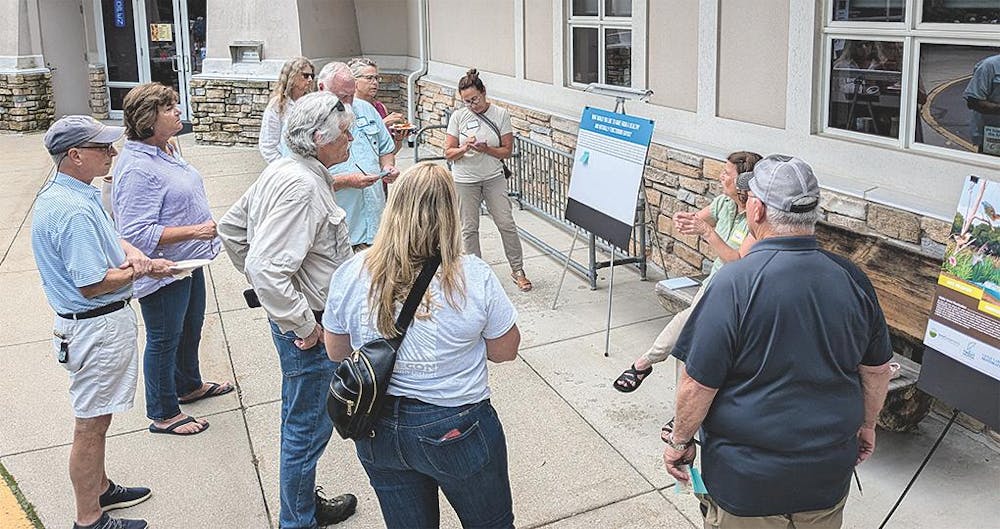WHITEHALL — Local residents have heard a lot about the Chemours Environmental Impact Committee’s push to restore Sadony Bayou over the past several years, but Wednesday night’s meeting at the White Lake Community Library, the first of three, brought two new tools to the fore.
The meetings are being funded by a grant from the Lois M. Ekstrand Fund, advised by the White Lake Community Fund.
First, CEIC brought in Spencer High from Querkus Creative, a nonprofit design consultant, to show visual renderings of how the White Lake area has changed over the years. High gave special focus to what has happened since the White Lake channel was installed in the 1870s at the request of logging companies seeking an easier way to bring shipments to Whitehall, Montague and the surrounding areas. His illustrations noted that over time, the White River’s flow, and by extension Sadony Bayou, has accumulated more and more sediment because it’s unable to flush additional nutrients, plant material and sand. He also showed that bayous are a fairly common sight in West Michigan, with no fewer than 18 publicly accessible ones along the Grand and White rivers.
High’s own excitement was clear during the presentation. He noted West Michigan’s biodiversity, stating it is more biodiverse even than Yellowstone National Park. He also expressed his love for dunes, calling them among his favorite type of ecosystem. The Barrier Dunes Sanctuary, located in White River Township, is, he said, growing as a result of aftereffects of the White Lake channel. He added that in the past, Sadony Bayou served as the “first line of defense” for White Lake, stabilizing water levels. Creation of the channel changed that, as the channel bypassed the White River mouth.
The second tool CEIC added was asking for public feedback. The question was simple: What do you want to see from the bayou? Attendees answered by placing Post-it notes on ‘visioning boards’ CEIC will consult to determine the next steps before it meets again in August.
“The encouraging piece at the meeting was that a lot of people were excited about something changing, and knowing that there is the possibility to go back to something that benefits more of the fish and the wildlife and the plants, but also the way they interact with it as well,” CEIC’s Marty Holtgren said. “I think the excitement here is contagious. That’s why I’m excited. There’s very few projects that I’ve worked on doing natural resource restoration (where) you have a community that’s pushing it, and a community that’s excited about finding solutions to a problem that they’ve lived with for years. I think that’s the exciting piece of this project, and really why I’m here.”
Holtgren added he’s optimistic CEIC’s taking a more positive look at what can be done with the bayou and not focusing as much on the negatives of how the bayou arrived at its current state will spur even more community involvement. He also credited High’s presentation with stoking some momentum.
“When you can visualize, information can stick,” Holtgren said. “This was the first time I had seen Spencer present, and I just love the way that he made it graphically understandable. I now understand how a dune functions much better, and I had comments from folks that expressed the same. It is kind of using a different strategy. Instead of having a biologist or ecologist or engineer get up there, you have somebody that has a different mode of communicating. I think it worked great.”
The date of CEIC’s next meeting in this process has not been announced, but it will take place in August. A third meeting, intended to finalize a restoration plan for Sadony Bayou, is scheduled for September.













